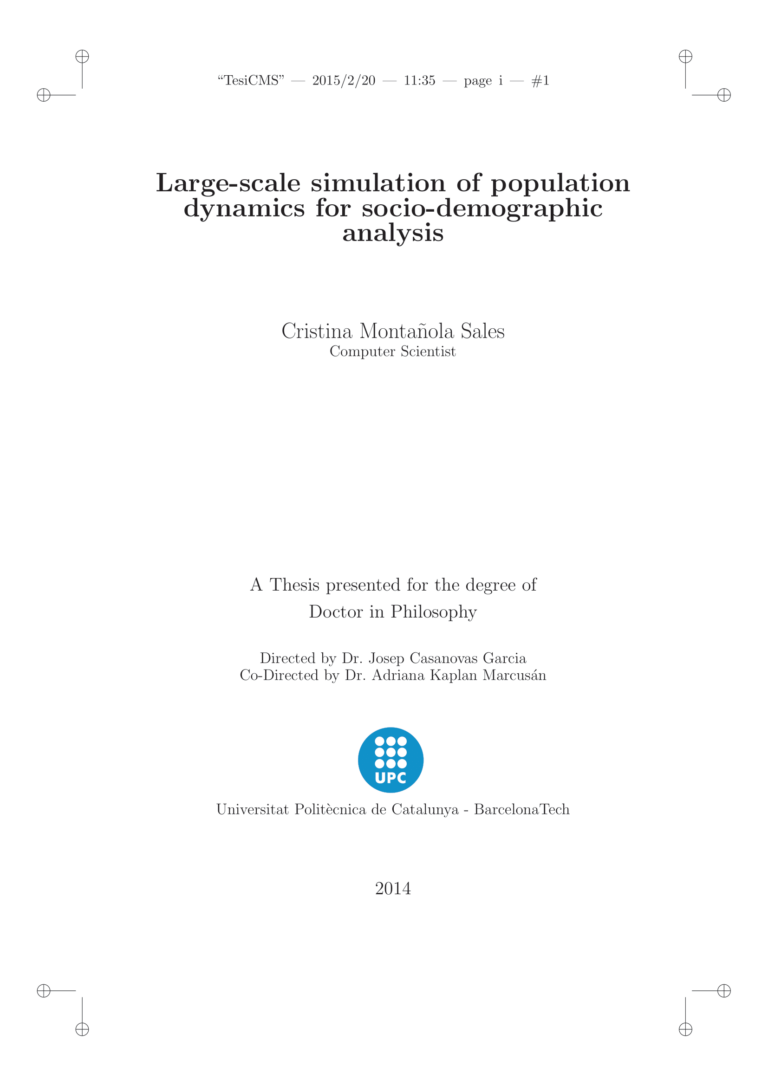Large-scale simulation of population dynamics for sociodemographic analysis

Theses
In this thesis we present a methodology for simulating large-scale population dynamics. Specifically, we have developed a parallel simulation environment that allows us to emulate demographic models, simulating the interactions of individuals in a society in order to obtain a population projection. Two of the main obstacles for the use of agent-based simulation in your practice are (a) scalability when the analysis requires very large models, and (b) its ease of use particularly for users who have no programming experience. Our approach proposes a solution in large-scale simulation of social systems in a parallel environment. We show its potential by studying its performance, identifying the factors that make it more sensitive at run time and investigating the impact of three known configurations of the architecture. Since the application of parallel simulation in demography is new, it is useful to calculate the effect of these factors on the performance of the methodology we propose. On the other hand, the developed environment includes a graphical user interface that allows users without programming experience to specify agent-based demographic models and execute them transparently in a parallel environment.
With this approach, we help to overcome a great barrier in the use of simulation even if a technical knowledge to execute scenarios in a high performance architecture is required. Finally, we present two case studies that demonstrate the scope of our approach to social sciences. The first case study analyses the evolution of the Gambian emigrant population in Spain between 2001 and 2011, a period that is especially relevant for immigration in Spain. The second case simulates the sociodemographic changes in South Korea over a hundred years. The aim is to show what our methodology can contribute to the in-depth study of demographic processes. Our results show that agent-based modelling can be very useful in demographics. Also, the use of one around parallel computing allows us to simulate population demographics on a large scale.